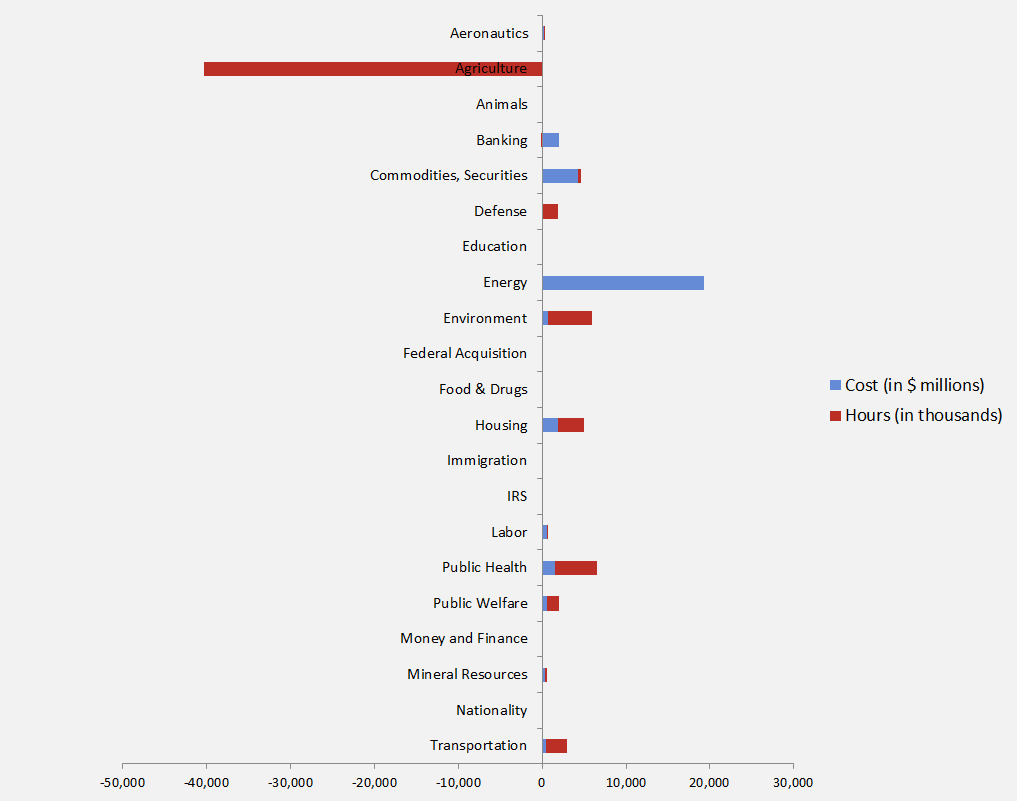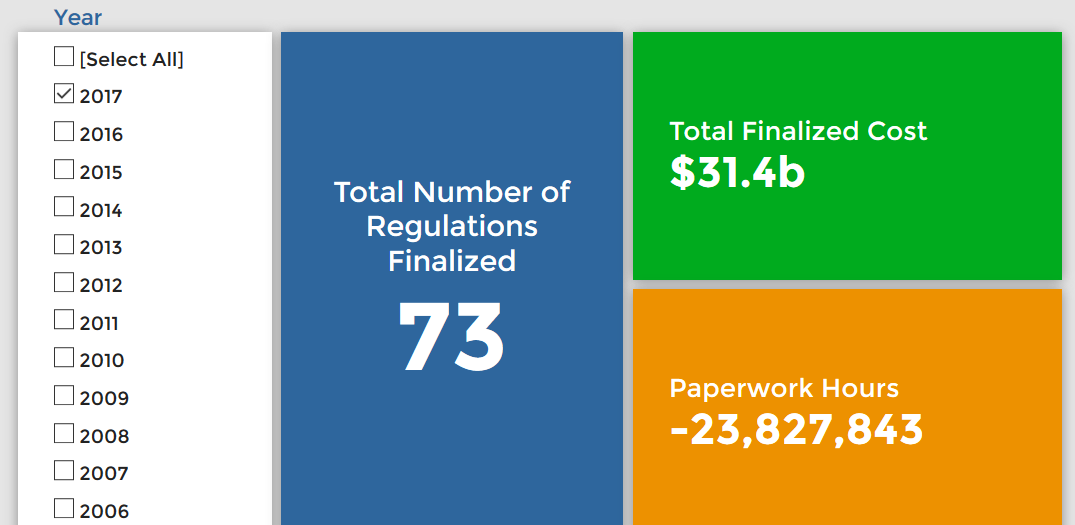Week in Regulation
April 24, 2017
$2 Million Costs
There wasn’t much in the way of new regulation this week. Total final rule costs only grew by $1.7 million, with $2.1 million including proposed measures; paperwork grew by 363 hours. Regulatory agencies are still on pace to reduce compliance costs, on net, by the end of this fiscal year. The per capita regulatory burden for 2017 is $442.
Regulatory Toplines
- New Proposed Rules: 25
- New Final Rules: 43
- 2017 Total Pages of Regulation: 18,078
- 2017 Final Rules: $31.38 Billion
- 2017 Proposed Rules: $111.6 Billion
The American Action Forum (AAF) has catalogued regulations according to their codification in the Code of Federal Regulations (CFR). The CFR is organized into 50 titles, with each title corresponding to an industry or part of government. This snapshot of final rules (a change from earlier versions) will help to determine which sectors of the economy receive the highest number of regulatory actions.
Other than routine airworthiness directives, the lone notable rulemaking this week involved a federal milk marketing order for California. The order merely proposed a new collection of information on 1,400 respondents. The total paperwork burden is 363 hours, with just $12,000 in associated costs.
Tracking Regulatory Modernization
This week the administration unofficially released a proposed rule for the FY 2018 “Hospice Wage Index.” This is a routine, annual rulemaking, but it is economically significant. It also involves a statutory mandate, so it could receive an exemption under the one-in, two-out regulatory budget; it likely does not impose significant regulatory costs, just intergovernmental transfers.
For CRA resolutions, the House and Senate have both passed 13 CRA resolutions, with the Senate passing 13 total and the House 15 in all. President Trump has signed 13 and Congress and the administration have eliminated $3.7 billion in total regulatory costs and 4.2 million paperwork burden hours. There are two additional House CRA approvals on which the Senate has not voted, including a notable methane flaring measure ($1.8 billion in costs). To date, there have been more than 30 resolutions of disapproval introduced.
On regulatory budget implementation, below are the agencies that have accrued annual savings and are technically compliant with the president’s one-in, two-out budget:
- Defense: $400 million
- Interior: $360 million
- Education: $100 million
- Labor: $78 million
- HHS: $0.02 million
All non-DOL figures are the result of CRA resolutions of disapproval. Given their historic regulatory output, AAF can predict that Defense, Interior, and Education will likely meet the goal of $0 in net regulatory costs by the end of this fiscal year.
Affordable Care Act
Since passage, based on total lifetime costs of the regulations, the Affordable Care Act has imposed costs of $53 billion in final state and private-sector burdens and 176.9 million annual paperwork hours.
Dodd-Frank
Click here to view the total estimated revised costs from Dodd-Frank; since passage, the legislation has produced more than 74.8 million final paperwork burden hours and imposed $38.5 billion in direct compliance costs.
Total Burdens
Since January 1, the federal government has published $143 billion in compliance costs ($31.38 billion in final rules) and has cut 19.8 million paperwork burden hours (due to 23.8 million in reductions from final rules). Click below for the latest Reg Rodeo findings.












